-
 Bitcoin
Bitcoin $105,213.9543
-1.43% -
 Ethereum
Ethereum $2,534.1529
-5.66% -
 Tether USDt
Tether USDt $1.0004
0.02% -
 XRP
XRP $2.1293
-3.62% -
 BNB
BNB $651.6070
-1.04% -
 Solana
Solana $145.6637
-5.96% -
 USDC
USDC $0.9996
-0.01% -
 Dogecoin
Dogecoin $0.1768
-4.52% -
 TRON
TRON $0.2701
-0.48% -
 Cardano
Cardano $0.6330
-5.47% -
 Hyperliquid
Hyperliquid $41.0199
-0.92% -
 Sui
Sui $3.0216
-7.45% -
 Bitcoin Cash
Bitcoin Cash $435.1142
1.00% -
 Chainlink
Chainlink $13.1295
-7.22% -
 UNUS SED LEO
UNUS SED LEO $9.0033
1.58% -
 Stellar
Stellar $0.2582
-4.32% -
 Avalanche
Avalanche $19.0562
-7.26% -
 Toncoin
Toncoin $2.9869
-4.96% -
 Shiba Inu
Shiba Inu $0.0...01192
-3.81% -
 Hedera
Hedera $0.1561
-5.81% -
 Litecoin
Litecoin $84.9066
-3.04% -
 Polkadot
Polkadot $3.7754
-5.29% -
 Ethena USDe
Ethena USDe $1.0002
-0.02% -
 Monero
Monero $308.5756
-4.32% -
 Dai
Dai $0.9997
-0.01% -
 Bitget Token
Bitget Token $4.5027
-2.45% -
 Uniswap
Uniswap $7.3970
-4.96% -
 Pepe
Pepe $0.0...01090
-7.41% -
 Aave
Aave $279.5603
-5.99% -
 Pi
Pi $0.5658
-8.02%
Is the golden cross in the oversold zone of RSI effective? How to view the rebound space?
The golden cross in an oversold RSI zone can signal a strong bullish trend, but traders should confirm with volume and consider market sentiment for reliability.
Jun 10, 2025 at 11:56 pm
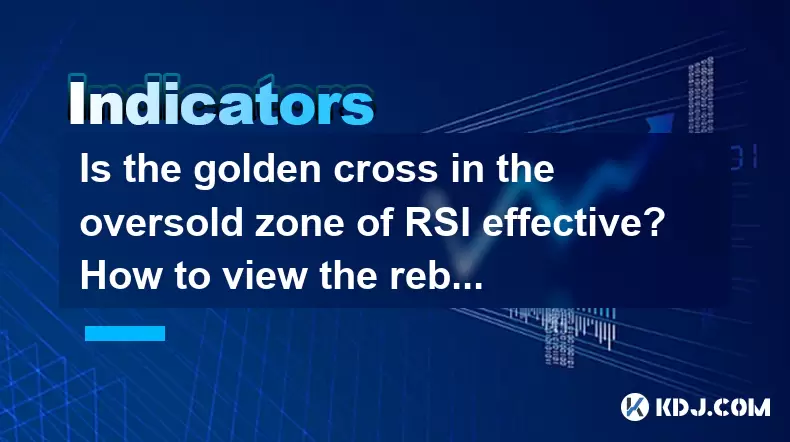
The golden cross, a popular technical analysis tool in the cryptocurrency market, refers to a bullish signal that occurs when a short-term moving average crosses above a long-term moving average. When this signal appears in the oversold zone of the Relative Strength Index (RSI), it raises questions about its effectiveness and the potential rebound space. This article delves into these aspects, providing a detailed analysis and operational guidelines.
Understanding the Golden Cross
The golden cross is a key indicator used by traders to identify potential bullish trends. It is formed when a short-term moving average, typically the 50-day moving average, crosses above a longer-term moving average, often the 200-day moving average. This event suggests that the asset's price is gaining upward momentum, and it is often used to signal entry points for long positions.
The Role of RSI in Technical Analysis
The Relative Strength Index (RSI) is another crucial tool for technical analysts. It measures the speed and change of price movements, oscillating between 0 and 100. An RSI value below 30 indicates that an asset is in an oversold condition, meaning it might be undervalued and due for a price correction. Conversely, an RSI above 70 suggests the asset is overbought and may be poised for a price decline.
Effectiveness of the Golden Cross in the Oversold Zone of RSI
When a golden cross occurs while the RSI is in the oversold zone, it can be particularly significant. This scenario suggests that not only is the asset showing signs of a bullish trend reversal (golden cross), but it is also potentially undervalued (oversold RSI). This combination can be a strong signal for traders to consider entering a long position.
However, the effectiveness of this signal can vary. It is important to consider other factors such as market sentiment, volume, and broader economic indicators. For instance, if the golden cross occurs during a period of low trading volume, the signal might be less reliable. Similarly, if the broader market is bearish, the bullish signal from the golden cross might be short-lived.
How to View the Rebound Space
Assessing the potential rebound space after a golden cross in an oversold RSI zone involves several steps:
- Identify the Golden Cross and Oversold RSI: Confirm that the short-term moving average has crossed above the long-term moving average and that the RSI is below 30.
- Analyze Historical Data: Look at past instances where similar conditions occurred to understand the typical rebound magnitude. This can provide a benchmark for expected price movements.
- Consider Support and Resistance Levels: Identify key support and resistance levels on the price chart. These levels can act as barriers to the rebound space.
- Evaluate Market Sentiment: Use tools like sentiment analysis to gauge whether the market is generally bullish or bearish. Positive sentiment can enhance the rebound potential.
- Monitor Volume: Higher trading volume during the golden cross can confirm the strength of the bullish signal and potentially increase the rebound space.
Practical Steps for Trading Based on the Golden Cross and Oversold RSI
To effectively trade based on a golden cross in an oversold RSI zone, follow these detailed steps:
- Set Up Your Chart: Use a reliable trading platform and ensure your chart displays both moving averages and the RSI indicator.
- Add the 50-day and 200-day moving averages to your chart.
- Set up the RSI indicator with a period of 14, which is the standard setting.
- Monitor for the Golden Cross: Watch for the 50-day moving average to cross above the 200-day moving average.
- Check RSI Levels: Simultaneously, ensure that the RSI is below 30, indicating an oversold condition.
- Confirm with Volume: Look for an increase in trading volume around the time of the golden cross to validate the signal.
- Enter the Trade: Once the golden cross and oversold RSI are confirmed, consider entering a long position. Set a stop-loss order below the most recent low to manage risk.
- Set Profit Targets: Based on your analysis of historical rebounds and current support and resistance levels, set realistic profit targets.
Case Studies of Golden Cross in Oversold RSI Zones
To illustrate the effectiveness of this strategy, consider the following case studies from the cryptocurrency market:
- Bitcoin in 2020: In March 2020, Bitcoin experienced a significant drop, pushing the RSI into the oversold zone. Shortly after, a golden cross formed, and Bitcoin saw a substantial rebound, climbing from around $5,000 to over $10,000 in the following months.
- Ethereum in 2019: Ethereum's price in early 2019 showed a golden cross while the RSI was below 30. The subsequent rebound saw Ethereum's price increase from approximately $100 to over $300 within a few months.
These examples highlight that the combination of a golden cross and an oversold RSI can indeed be a powerful signal for a potential price rebound.
Additional Considerations
While the golden cross in an oversold RSI zone can be an effective trading signal, it is essential to approach it with caution. Here are some additional considerations:
- False Signals: Like any technical indicator, the golden cross can produce false signals. Always use additional confirmation tools to validate the signal.
- Market Conditions: The broader market context can significantly impact the effectiveness of the signal. In a strong bear market, even a golden cross in an oversold RSI might not lead to a significant rebound.
- Risk Management: Always implement sound risk management strategies, including setting stop-loss orders and not over-leveraging positions.
Frequently Asked Questions
Q: Can the golden cross and oversold RSI be used for short-term trading?
A: While the golden cross and oversold RSI are typically used for medium to long-term trading, they can also be applied to short-term trading. However, short-term traders should be prepared for higher volatility and potential false signals, and they should adjust their entry and exit strategies accordingly.
Q: How does the choice of moving averages affect the effectiveness of the golden cross?
A: The choice of moving averages can significantly impact the effectiveness of the golden cross. The 50-day and 200-day moving averages are commonly used, but traders might experiment with other combinations, such as the 20-day and 50-day moving averages, depending on their trading style and time frame.
Q: Are there other indicators that can complement the golden cross and oversold RSI?
A: Yes, several other indicators can complement the golden cross and oversold RSI. For instance, the MACD (Moving Average Convergence Divergence) can provide additional confirmation of bullish trends, while the Bollinger Bands can help identify potential price volatility and breakout levels.
Q: How should traders adjust their strategy if the golden cross occurs but the RSI is not in the oversold zone?
A: If the golden cross occurs but the RSI is not in the oversold zone, traders should be more cautious. The bullish signal from the golden cross might still be valid, but the lack of an oversold RSI reduces the potential for a significant rebound. In such cases, traders might consider waiting for additional confirmation from other indicators or for the RSI to enter the oversold zone before entering a position.
Disclaimer:info@kdj.com
The information provided is not trading advice. kdj.com does not assume any responsibility for any investments made based on the information provided in this article. Cryptocurrencies are highly volatile and it is highly recommended that you invest with caution after thorough research!
If you believe that the content used on this website infringes your copyright, please contact us immediately (info@kdj.com) and we will delete it promptly.
- XRP Price Shows Signs of a Bullish Recovery, With Analysts Watching Levels for an Upside Breakout
- 2025-06-14 04:50:12
- XRP Price Shows Signs of a Bullish Recovery, as Analysts Watch Levels for an Upside Breakout
- 2025-06-14 04:50:12
- Leading Cryptocurrencies Dipped Despite Lower-Than-Expected Inflation and the New Trade Deal Announcement with China.
- 2025-06-14 04:45:12
- XRP Price Prediction: Can the Token Reach $73 This Cycle?
- 2025-06-14 04:40:12
- Bitcoin Hashrate Reaches All-Time High, Exceeding 943 EH/s
- 2025-06-14 04:40:12
- Bitcoin Hits Local ATH but Analysts Warn: Time to Sell and Watch Key Support
- 2025-06-14 04:35:13
Related knowledge

Is it an opportunity for the long positive line with large volume to break through the platform and then shrink back?
Jun 14,2025 at 04:42am
Understanding the Long Positive Line with Large VolumeIn technical analysis, a long positive line refers to a candlestick pattern where the closing price is significantly higher than the opening price, often indicating strong buying pressure. When this occurs alongside large volume, it suggests that market participants are actively involved in pushing t...
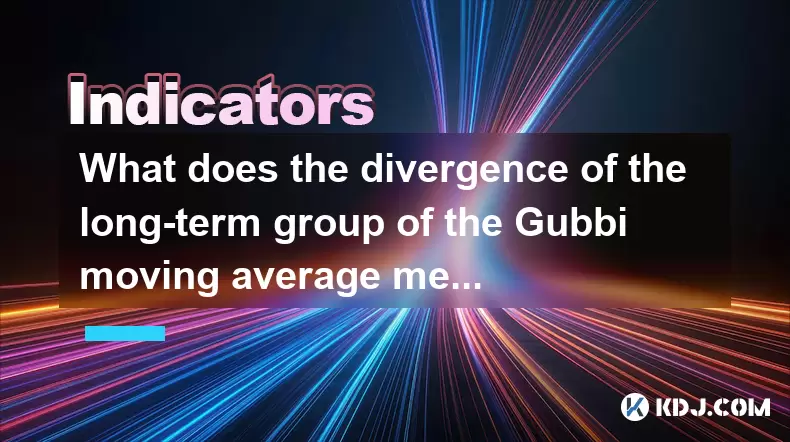
What does the divergence of the long-term group of the Gubbi moving average mean? How long can the trend last?
Jun 14,2025 at 02:56am
Understanding the Gubbi Moving AverageThe Gubbi moving average is a technical indicator used by traders in cryptocurrency markets to identify trends and potential reversals. Unlike traditional moving averages, the Gubbi variant incorporates unique calculations that emphasize price momentum and volatility adjustments. This makes it particularly useful fo...
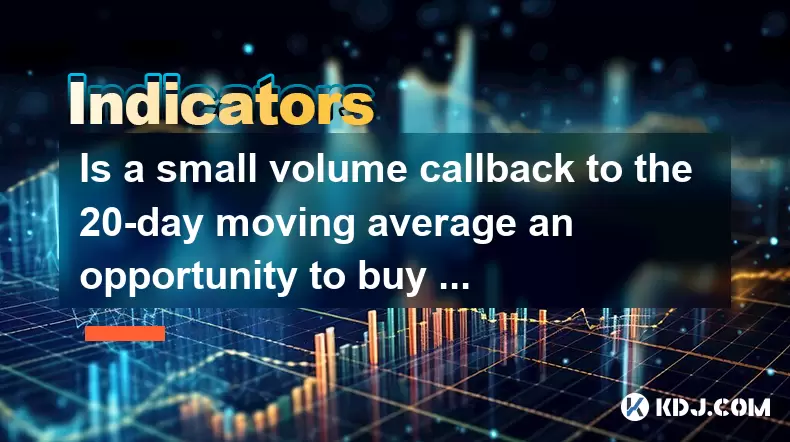
Is a small volume callback to the 20-day moving average an opportunity to buy low? What is the key to look at?
Jun 14,2025 at 02:28am
Understanding the 20-Day Moving Average in Cryptocurrency TradingIn cryptocurrency trading, the 20-day moving average (20DMA) is a commonly used technical indicator that helps traders assess the short-term trend of an asset. It calculates the average price of a cryptocurrency over the last 20 days and smooths out price volatility. When a coin experience...
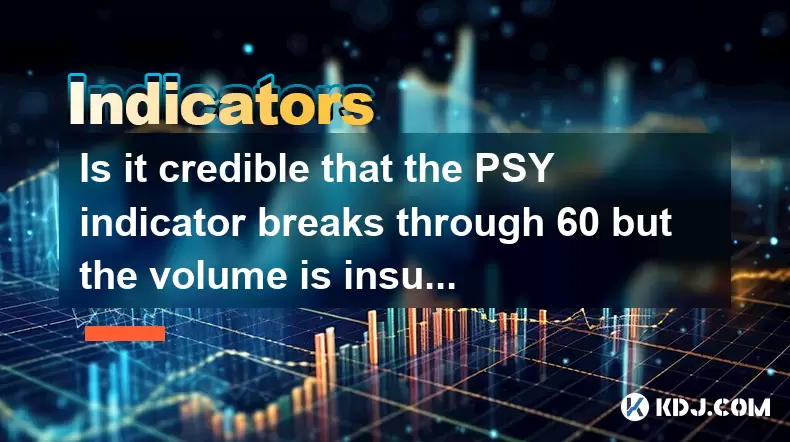
Is it credible that the PSY indicator breaks through 60 but the volume is insufficient?
Jun 14,2025 at 12:14am
Understanding the PSY Indicator in Cryptocurrency TradingThe Psychological Line (PSY) indicator is a momentum oscillator used primarily to measure the sentiment of traders and investors in financial markets, including the cryptocurrency space. It calculates the ratio of days where prices closed higher versus lower over a specified period, typically 12 o...
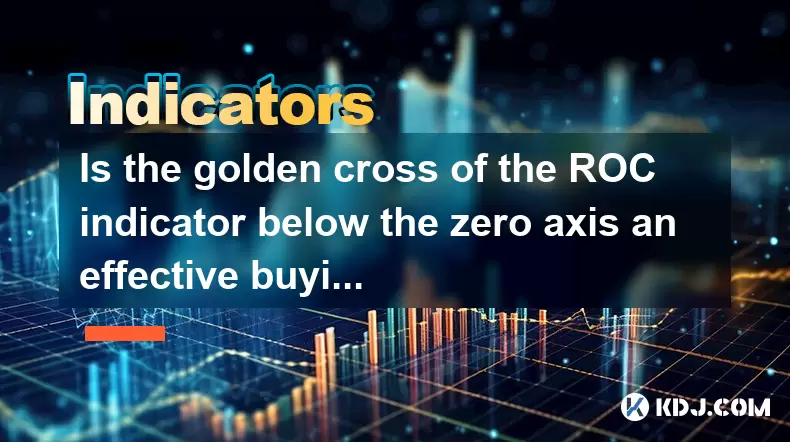
Is the golden cross of the ROC indicator below the zero axis an effective buying point?
Jun 14,2025 at 01:29am
Understanding the ROC Indicator and Its SignificanceThe Rate of Change (ROC) indicator is a momentum oscillator used in technical analysis to measure the percentage change in price between the current closing price and the closing price from a set number of periods ago. This tool helps traders assess the speed at which prices are changing, offering insi...
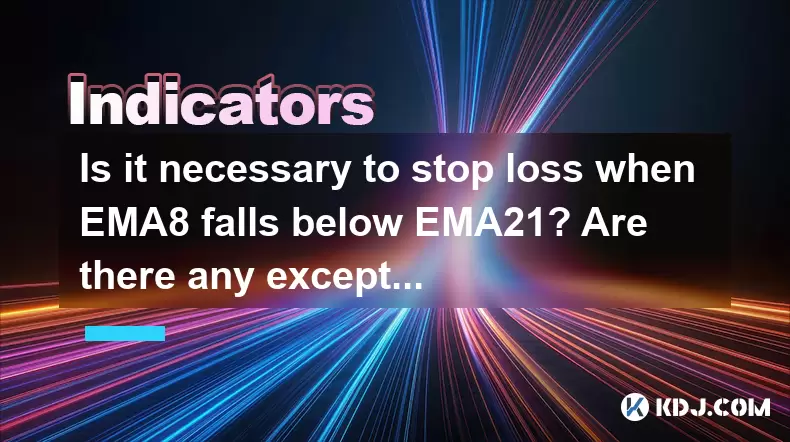
Is it necessary to stop loss when EMA8 falls below EMA21? Are there any exceptions?
Jun 14,2025 at 02:42am
Understanding EMA8 and EMA21 in Cryptocurrency TradingIn cryptocurrency trading, Exponential Moving Averages (EMAs) are widely used technical indicators to identify trends and potential reversal points. The EMA8 refers to the 8-period exponential moving average, while EMA21 is the 21-period EMA. These tools help traders make informed decisions by smooth...

Is it an opportunity for the long positive line with large volume to break through the platform and then shrink back?
Jun 14,2025 at 04:42am
Understanding the Long Positive Line with Large VolumeIn technical analysis, a long positive line refers to a candlestick pattern where the closing price is significantly higher than the opening price, often indicating strong buying pressure. When this occurs alongside large volume, it suggests that market participants are actively involved in pushing t...

What does the divergence of the long-term group of the Gubbi moving average mean? How long can the trend last?
Jun 14,2025 at 02:56am
Understanding the Gubbi Moving AverageThe Gubbi moving average is a technical indicator used by traders in cryptocurrency markets to identify trends and potential reversals. Unlike traditional moving averages, the Gubbi variant incorporates unique calculations that emphasize price momentum and volatility adjustments. This makes it particularly useful fo...

Is a small volume callback to the 20-day moving average an opportunity to buy low? What is the key to look at?
Jun 14,2025 at 02:28am
Understanding the 20-Day Moving Average in Cryptocurrency TradingIn cryptocurrency trading, the 20-day moving average (20DMA) is a commonly used technical indicator that helps traders assess the short-term trend of an asset. It calculates the average price of a cryptocurrency over the last 20 days and smooths out price volatility. When a coin experience...

Is it credible that the PSY indicator breaks through 60 but the volume is insufficient?
Jun 14,2025 at 12:14am
Understanding the PSY Indicator in Cryptocurrency TradingThe Psychological Line (PSY) indicator is a momentum oscillator used primarily to measure the sentiment of traders and investors in financial markets, including the cryptocurrency space. It calculates the ratio of days where prices closed higher versus lower over a specified period, typically 12 o...

Is the golden cross of the ROC indicator below the zero axis an effective buying point?
Jun 14,2025 at 01:29am
Understanding the ROC Indicator and Its SignificanceThe Rate of Change (ROC) indicator is a momentum oscillator used in technical analysis to measure the percentage change in price between the current closing price and the closing price from a set number of periods ago. This tool helps traders assess the speed at which prices are changing, offering insi...

Is it necessary to stop loss when EMA8 falls below EMA21? Are there any exceptions?
Jun 14,2025 at 02:42am
Understanding EMA8 and EMA21 in Cryptocurrency TradingIn cryptocurrency trading, Exponential Moving Averages (EMAs) are widely used technical indicators to identify trends and potential reversal points. The EMA8 refers to the 8-period exponential moving average, while EMA21 is the 21-period EMA. These tools help traders make informed decisions by smooth...
See all articles

























































































